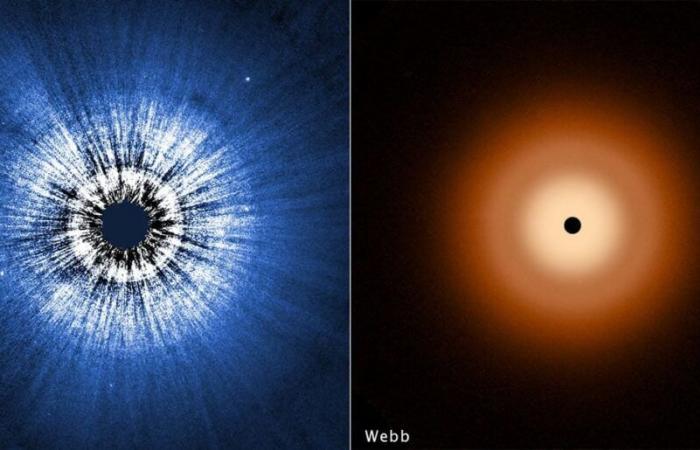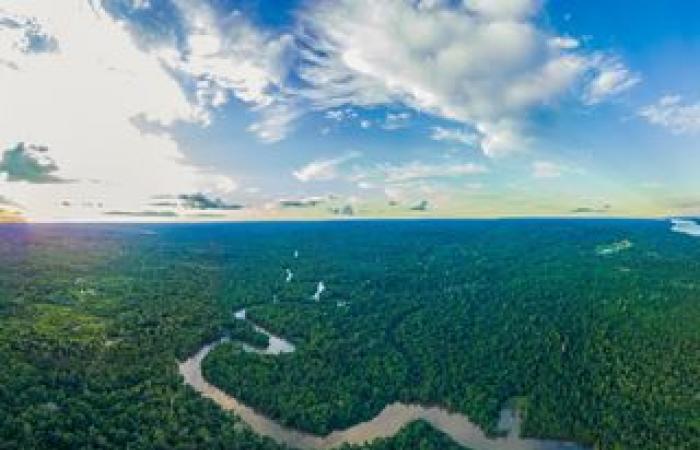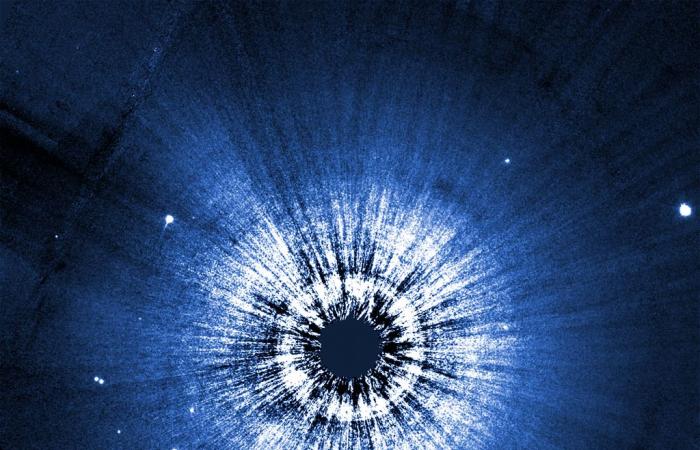A team of astronomers from the University of Arizona, Tucson, used NASA’s Hubble and James Webb space telescopes to look deeper than ever before, the debris disk nearly 160 billion kilometers in diameter that surrounds Vega. “The Hubble and Webb telescopes provide a very clear view of Vega. It’s a mysterious system because it’s different from other circumstellar disks we’ve observed,” said Andras Gáspár of the University of Arizona, a member of the research team. “Vega’s disc is smooth, ridiculously smooth.”
The big surprise for the research team is that there is no clear evidence that one or more large planets are crossing the frontal disk like snow plow tractors. “It makes us rethink the scope and variety of exoplanetary systems,” said Kate Su of the University of Arizona, lead author of the paper that presents Webb’s findings.
Hubble sees the infrared glow of a disk of particles the size of a grain of sand swirling around the sparkling blue-white star that is 40 times brighter than our Sun. Hubble captures an outer halo of this disk, with particles no larger than smoke and reflecting the star’s light.
The distribution of dust in Vega’s debris disk is stratified because pressure from starlight pushes small grains faster than large ones. “Different types of physics will locate particles of different sizes in different places,” said the team’s Schuyler Wolff from the University of Arizona, lead author of the paper presenting the Hubble results.
Vega’s disk has a subtle gap, about 60 AU (astronomical units) from the star (twice the distance of Neptune from the Sun), but it is otherwise very smooth along its entire length until it is lost in the star’s glare. This shows that there are no planets with at least the mass of Neptune rotating in large orbits, as is the case in our solar system, the researchers explain.
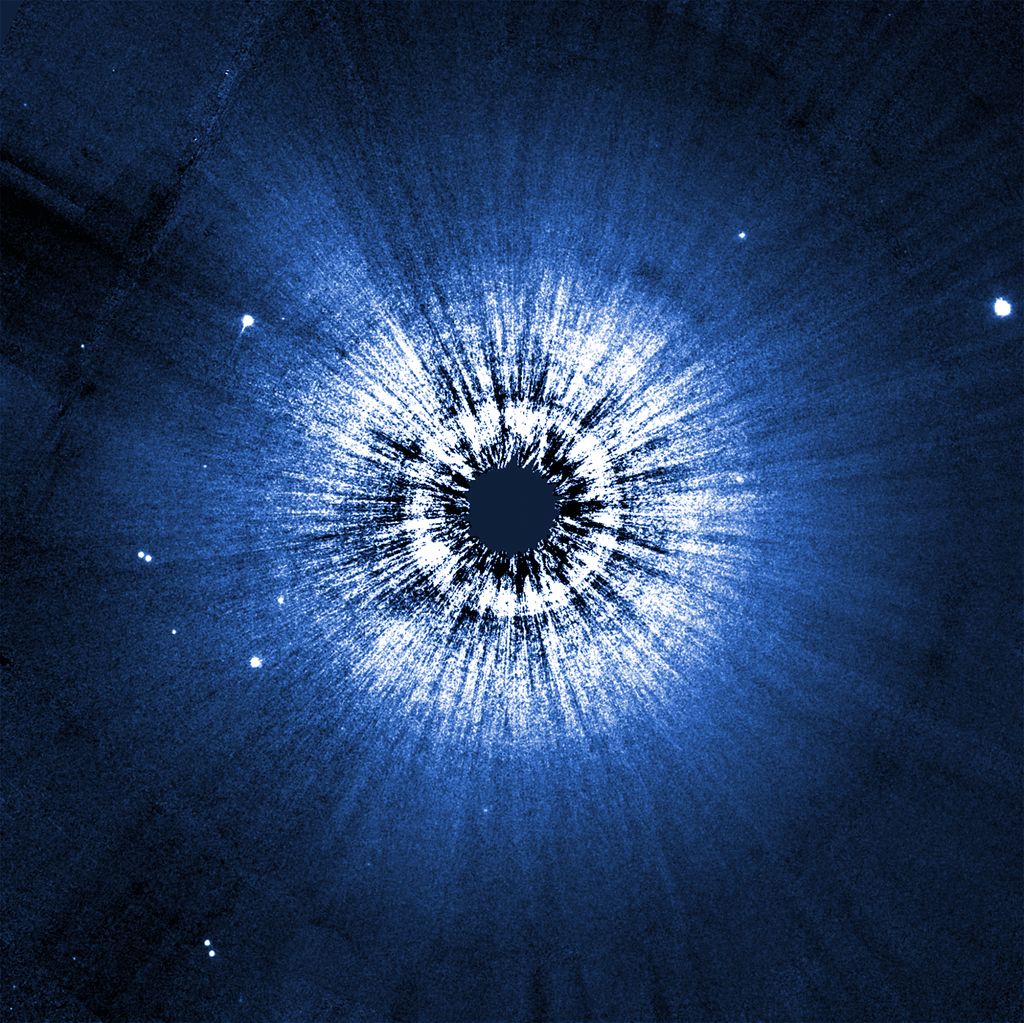
We study in detail the diversity of circumstellar disks and how this diversity relates to underlying planetary systems. We are discovering a lot about planetary systems, even when we cannot see what might be hidden planets,” Su added.
Disc diversity
Newly formed stars accumulate material from a disk of dust and gas that is the flattened remnant of the cloud from which they formed. In the mid-1990s, Hubble has discovered disks around many newly formed stars. These disks are probably places of formation, migration, and sometimes destruction of planets. Fully mature stars like Vega have dust disks enriched by ongoing “bumper car” collisions between orbiting asteroids and evaporating comet debris. These are primordial bodies that can survive to Vega’s current age, which is 450 million years (our Sun is about ten times older than Vega). Dust inside our solar system (seen as zodiacal light) is also replenished by minor bodies that expel dust at a rate of about 10 tons per second. This dust is pushed by the planets. This provides a strategy for detecting planets around other stars without seeing them directly, only observing the effects they have on the dust.
“Vega remains unusual,” Wolff said. “The architecture of the Vega system is markedly different from that of our own solar system, where giant planets like Jupiter and Saturn prevent dust from spreading as happens in Vega.”
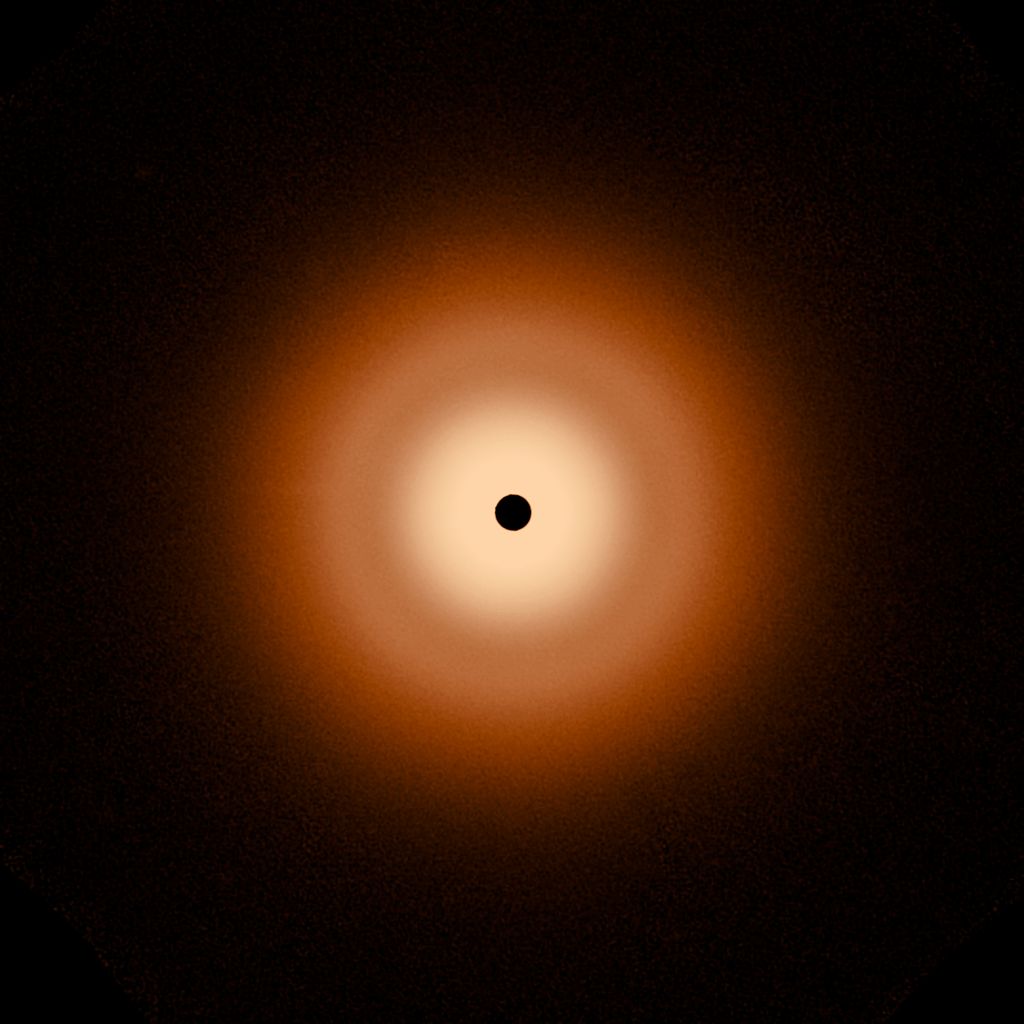
For comparison, there is a nearby star, Fomalhaut, which is about the same distance, has the same age and temperature as Vega. But the circumstellar architecture of Fomalhaut is very different from that of Vega. Fomalhaut has three interlocking debris belts.
Vega, located in the summer constellation Lyra, is one of the brightest stars in the northern sky. It is legendary because it provided the first evidence that there was material orbiting a star (presumably the material to form planets) as a possible home for life. This hypothesis was first formulated by Immanuel Kant in 1775, but more than 200 years passed before the first observational evidence was obtained in 1984. NASA’s Infrared Astronomy Satellite (IRAS) detected a strange excess of infrared light from hot dust, which has been interpreted as a layer or disk of dust extending twice Pluto’s orbital radius from the star.

